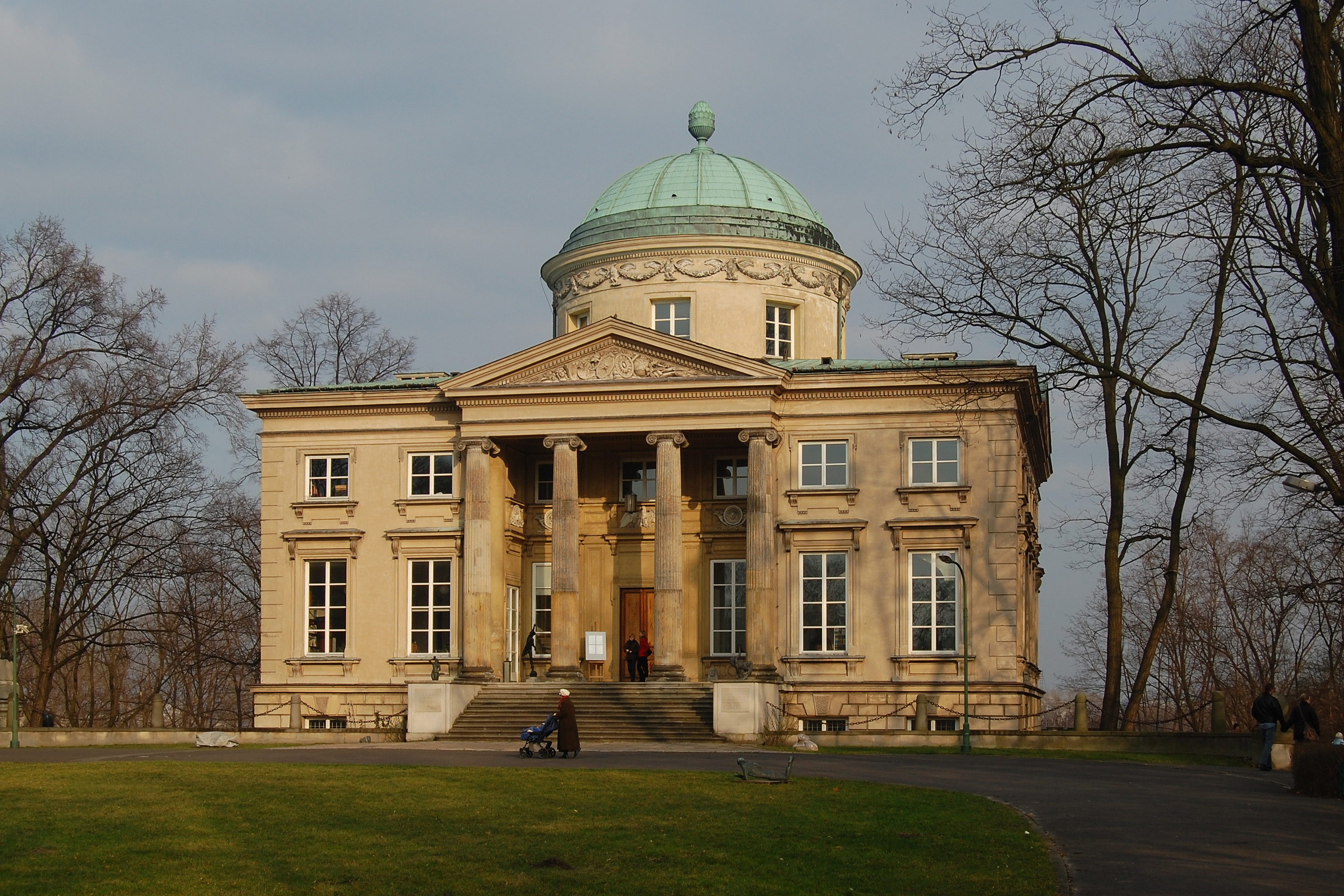- Królikarnia
Infobox Historic building

caption=Main façade.
name=Królikarnia
location_town=Warsaw
location_country=Poland
architect=Domenico Merlini
client=Karol de Thomatis
engineer=
construction_start_date=1782
completion_date=1786
date_demolished=1944
cost=
structural_system=
style=Neoclassical |Królikarnia ( _en. The Rabbit House) is a historical
palace inWarsaw ,Poland in classic style, as well as aneighborhood inMokotów district of Warsaw. A museum of Polish sculptor and artistXawery Dunikowski is located in the palace since 1965.en icon cite web |author = |url = http://www.krolikarnia.mnw.art.pl/index2.html |title = Królikarnia |work = www.krolikarnia.mnw.art.pl |publisher = |pages = |page = |date = |accessdate = 2008-07-24]History
The palace takes its name from the former destination of this site as a
rabbit warren for KingAugustus II the Strong , who considered the place, with its ravines and paths at various levels, ideal for organisingrabbit hunt s.pl icon cite web |author = Tadeusz Jaroszewski |url = http://kmk.waw.pl/index.php?option=com_content&task=view&id=46&Itemid=57 |title = Księga Pałaców Warszawy. Pałac Królikarnia |work = kmk.waw.pl |publisher = |pages = |page = |date = |accessdate = 2008-07-24] In 1778 the land was purchased by Count Karol de Valery-Thomatis, the chamberlain to KingStanisław August Poniatowski , who decided to settle there. The palace was built between 1782-1786 according to the designs ofDomenico Merlini . The building was modelled on the famousRennaissance Villa Capra "La Rotonda" nearVicenza designed byAndrea Palladio . [pl icon cite web |author = |url = http://info.galerie.art.pl/galerie/krolikar.html |title = Królikarnia Oddział Muzeum Narodowego w Warszawie |work = info.galerie.art.pl |publisher = |pages = |page = |date = |accessdate = 2008-07-24]In 1794, during the
Kościuszko Uprising against the Tsar's rule, the building was badly damaged and Count Thomatis wounded.Tadeusz Kościuszko himself stationed there for five days in July 1794. In 1816, Królikarnia was bought byMichał Hieronim Radziwiłł and in 1849 it was sold to Ksawery Pusłowski. In 1939 and in 1944, during the battles of theWarsaw Uprising , the palace was once again destroyed. In was restored in 1964.References
::In-line:External links
* [http://www.krolikarnia.mnw.art.pl/ Królikarnia Museum]
Wikimedia Foundation. 2010.
